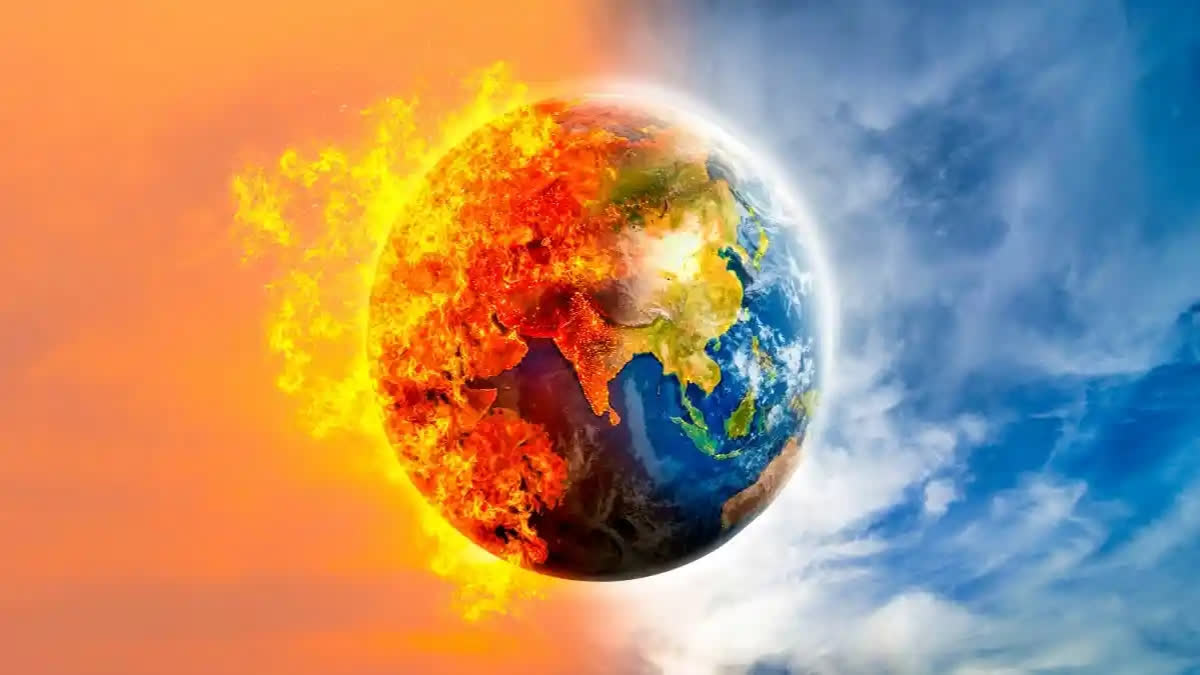Since the pre-industrial era (1850-1900), global temperature records show an average increase of 1 degree Celsius in global average surface temperature. This trend in warming has crossed the 1.5 degree celsius mark partially during 2016, 2017, and 2019 and in 2023. It is predicted by climate scientists that the internationally agreed threshold of 1.5 degree is likely to be surpassed also sometime during 2024.
What experts say?
According to the experts, by 2050, many parts of the world, India including, the temperature will cross survivability limits, requiring adopting passive cooling measures. The extra heat drives regional and seasonal temperature extremes, reducing snow cover in the Polar Regions and over the mountain chains like the Himalayas, intensifying heavy rainfall and impacting the habitat ranges for plants and animals and also the living space of humans.
The Warning
We are witnessing an increasing frequency of natural disasters like landslides, forest fires, flash flooding and cyclonic storms in various parts of the world including India, resulting in massive human and economic losses. The latest report by the UN Intergovernmental Panel warns that the changes global warming has set in motion "are irreversible for centuries to millennia, especially changes in the ocean, ice sheets and global sea level." So the warning emanating from scientific research is clear. The weather changes are bound to happen despite our best efforts to curtail the rate of greenhouse gas emissions and at best we can only mitigate the impact. Further, the new studies using Artificial Intelligence found that regardless of rise and fall of gas emissions.
Who Can Withstand?
Meeting the climate change challenges requires the societies to develop the wherewithal to achieve the goals of both mitigation and adaptation. Mitigation part of the discussion centres on reducing carbon emissions and the current estimate of heat trapping atmospheric carbon dioxide is 417 parts per million, according to the measurements published in 2022.
1.5 Degree Celsius Mark
The meetings like the COP offer platforms for the conference parties to deliberate and wrangle over the deadlines and upper limit of emissions to keep global temperatures further rising to 1.5 degree Celsius from the current level. Mitigation refers to reducing carbon emissions and the way the countries have been debating over the deadlines and upper limit of emissions, the global average temperature is bound to overshoot and reach 1.5 degree Celsius. This scenario prompts us to take the adaptation strategies much more seriously. Although we hear a lot about the discussions on the long-term mitigation strategies, much less is heard about the adaptation strategies.
Creating Climate-resilient Society
Adapting to climate change in the best way possible is the way forward to create a climate-resilient society. The specific targets for global adaptation programmes established under the Paris Agreement include enhancing the adaptive capacity and strengthening resilience, thus reducing the vulnerability to climate change.
The Intergovernmental Panel on Climate Change (IPCC) reports define vulnerability as the propensity to be adversely affected by climate change and it is applicable not only to humans, but also to the sustainability of ecosystems.
Practical Solutions Holds Key
Adaptation to climate change refers to the vast range of actions societies can take to lessen the adverse impacts of global warming on the environment, society, public health, the economy and more. Adjusting to these impacts requires practical solutions tailored to each country, region or community.
The communities, therefore, will have to adopt measures that are tuned to the specific regional requirements of their living spaces depending on the nature and character of the climate-induced challenges. This may range from solutions like generating renewable energy to restoring ecosystems.
Using Nature-based Solutions
Using new technologies, humans can use nature-based solutions to adapt to the impacts of climate change. Restoring degraded ecosystems protects that act as buffers against weather extremes and against coastal inundation due to sea level rise or due to storms that are becoming more intense. New strategies may have to be adopted for groundwater recharge, eco-friendly livestock management, sustainable agriculture and restoration of coastal habitats.
